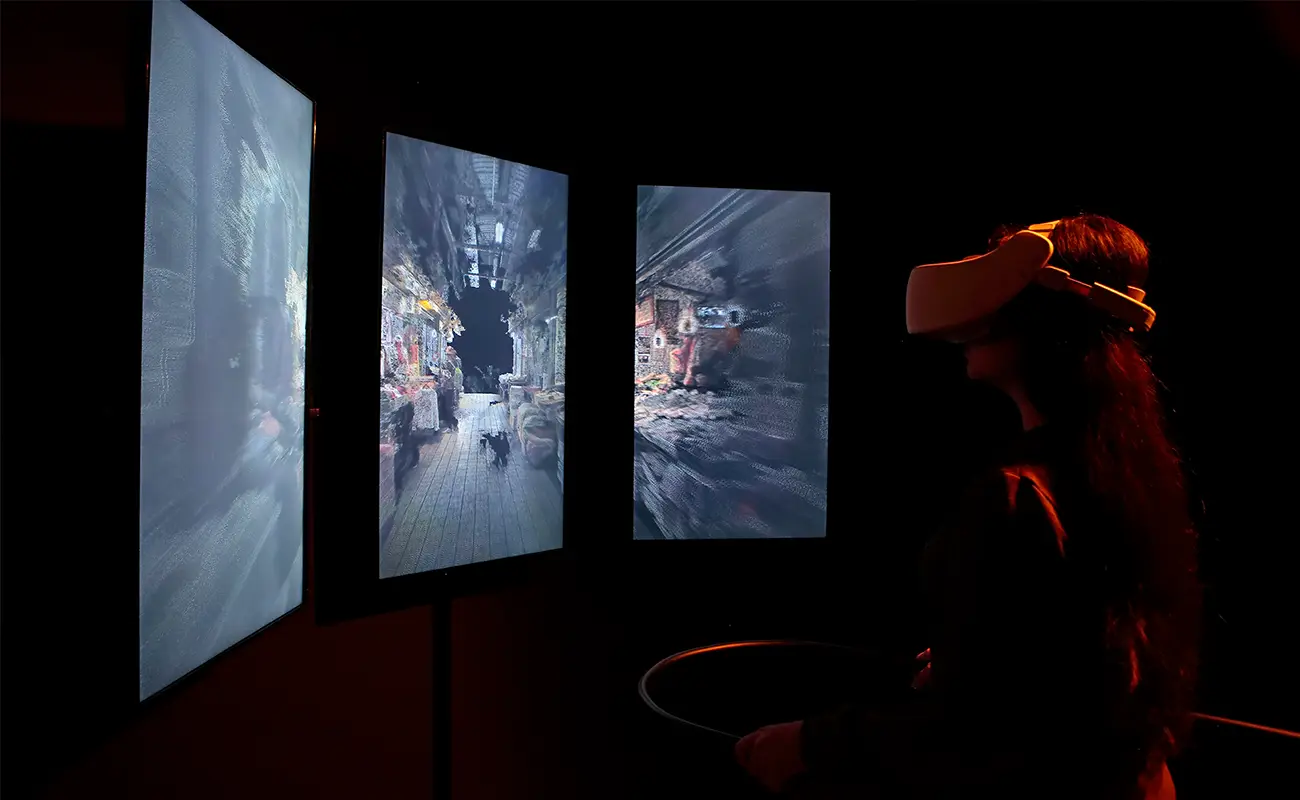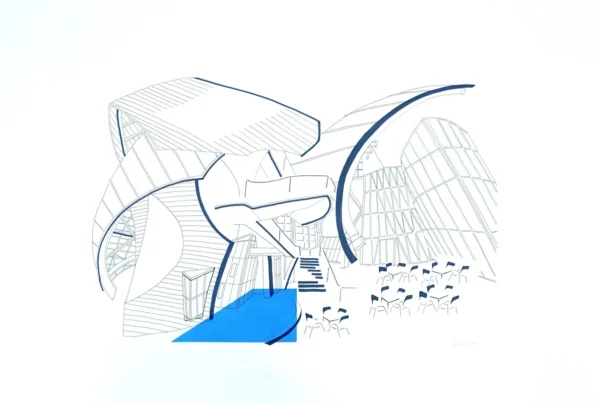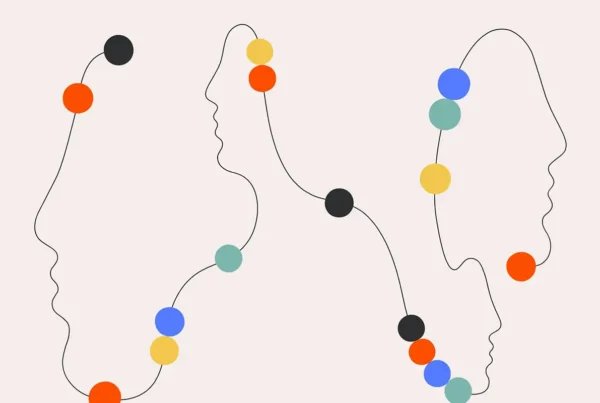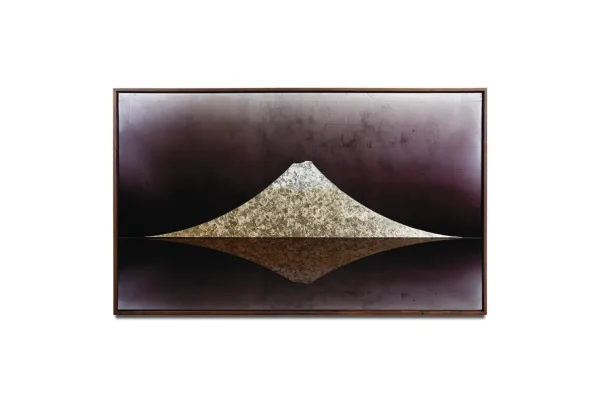“Art demands a dialectical relationship between the self and the surrounding social or spatial context.”
Shifting the Frame: From Commercial Media to Experiential Art
Yu-Hao Hung is a visual and new media artist based in Taipei whose practice uniquely blends technological precision with conceptual depth. His journey into the art world did not begin with formal training in fine arts but rather with a foundation in mass communication and media production. Initially working in video post-production and motion graphics, Hung developed a fluency in time-based visual storytelling. These early professional experiences sharpened his skills in editing and visual composition, which later became instrumental in crafting immersive installations and virtual environments. His transition from the linear logic of commercial media into the more exploratory language of art reflects a deep desire to interrogate how technology mediates our relationship with space, history, and perception.
The pivotal moment in Hung’s artistic evolution came in 2015 when he began experimenting with 360° video and VR. These tools opened new avenues for narrative construction beyond traditional screens, allowing him to engage with memory and place in multidimensional ways. This experimentation led him to embrace 3D scanning, spatial imaging, and interactive formats that transcended the limits of conventional storytelling. When Hung entered the Master’s program in New Media Art at the National Taiwan University of Arts, he encountered a new framework for creative thinking—one rooted in dialogue between the self and its social or spatial surroundings. This shift enabled him to develop a practice that situates technology not merely as a tool, but as a language for interpreting the everyday.
Over time, Hung’s work gained recognition through exhibitions and awards, gradually expanding into international platforms and residencies. What began as a technical career evolved into a full-time artistic journey spanning nearly a decade. His projects often investigate how digital media archives traces of social life, particularly in urban neighborhoods where the layers of time are visible yet frequently overlooked. In these contexts, his installations do more than just represent—they invite viewers to inhabit alternative perspectives of memory, history, and urban transformation.
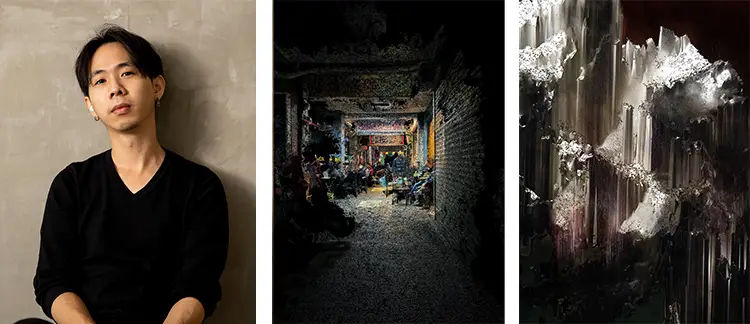
Yu-Hao Hung: Where Memory Meets Digital Infrastructure
Hung’s artistic language is anchored in a fascination with digital spatiality and temporal perception. He frequently employs 3D scanning technologies and point cloud imagery to render environments that appear both familiar and estranged. These fragmented visual landscapes often reflect older neighborhoods in Taipei—areas where historical remnants intertwine with contemporary development. Through immersive formats like VR, projection installations, and interactive environments, Hung explores how digital reconstruction can offer new interpretations of place. His works do not seek to restore or preserve memory in a nostalgic sense, but to examine how memory is mediated, abstracted, and sometimes fractured through technology.
Themes of social invisibility and cultural layering surface repeatedly in his practice. Hung uses digital tools to amplify what is often hidden in plain sight—the subtle, residual presence of communities, histories, and interactions embedded in urban architecture. Rather than treating the scanned image as documentation, he transforms it into a platform for philosophical inquiry. The pixelated voids and data glitches within point clouds become expressive devices, gesturing toward the incomplete and uncertain nature of memory itself. In this way, his visual aesthetic mirrors the fragmented experience of navigating cities whose pasts and futures constantly overlap.
His installations often prompt a shift in sensory engagement. Instead of delivering linear narratives, they create environments where viewers must navigate space, ambiguity, and abstraction. Influences such as Paul Sermon and Ryoji Ikeda are evident in Hung’s work—not just in the interactive and data-driven techniques, but in the emphasis on physical sensation and viewer presence. He shares Sermon’s interest in spatializing communication and Ikeda’s drive to push the perceptual limits of data. For Hung, digital media is not only a representational medium but also a way of investigating the structures that shape how we perceive the world around us.
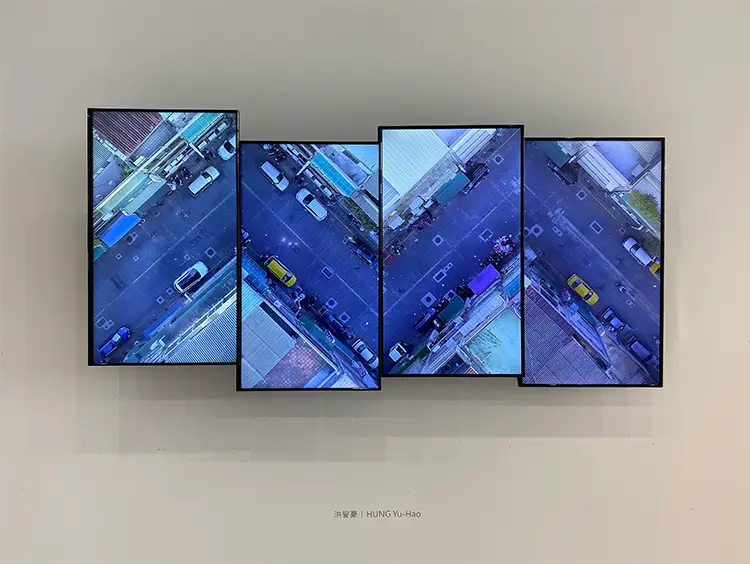
Architectural Ghosts and Immersive Archives
Among Hung’s most significant works is On Fluid Street, a project that exemplifies his method of layering data, memory, and lived experience. This piece fuses aerial photography with 3D scanning to create a multidimensional portrait of urban space. By juxtaposing detached, map-like visuals from drone footage with fragmented street-level scans, the work captures a tension between distance and immersion. The aerial perspective abstracts the city into temporal sequences recorded from day into night, while the point clouds anchor the work in textured, ground-level specificity. Together, these layers offer a dual reading of urban memory—simultaneously collective and personal, fluid and frozen.
On Fluid Street was first presented as a large-scale VR and projection installation during Hung’s solo museum exhibition. Its immersive qualities invited viewers into a suspended, liminal space where the boundaries between map and terrain, presence and recollection, became blurred. The work represented a turning point in Hung’s career, marking the consolidation of his conceptual approach to spatial data and his commitment to using technology as more than an aesthetic device. Tools like LiDAR and drones were no longer merely equipment but extensions of a philosophical inquiry into how we navigate both physical and mental geographies.
What makes this piece particularly powerful is its ability to hold contradiction: it is at once clinical in its digital abstraction and intimate in its evocation of lived space. Hung doesn’t attempt to resolve these tensions. Instead, he harnesses them to illuminate the underlying structures of urban life—those that remain even as buildings change and people move on. By inviting viewers to move through layers of temporal and spatial information, the work opens a meditative dialogue about how cities are remembered, forgotten, and continually rewritten in data.

Yu-Hao Hung: Reimagining Connectivity Through Virtual Systems
While his past projects focus on capturing and reinterpreting existing urban environments, Hung’s vision for future work ventures into more speculative territories. He imagines building a large-scale immersive platform that connects multiple cities through real-time scanning and virtual simulation. This project would function as a living archive, where different communities and spatial narratives coexist in a shared digital ecosystem. Rather than aiming for photorealistic fidelity, the intention is to map the invisible—emotional residues, cultural rhythms, and social interactions that shape urban identity.
Hung is interested in how these interconnected spaces could evolve dynamically, responding to changes in the physical world through live data. The idea of a virtual field that reacts, transforms, and even develops its own “personality” raises compelling questions about how we define reality in digital terms. This project is not just a technical challenge; it is a conceptual one that probes the logic of simulation, representation, and collective memory. In Hung’s hands, virtuality becomes a reflective surface—a way to examine the glitches, habits, and flows that often go unnoticed in daily life.
Such ambitions build on his long-standing interest in how digital material can expose the hidden architectures of urban existence. He envisions this system not merely as a mirror of physical space, but as an interpretive lens capable of reshaping our understanding of the environments we inhabit. In doing so, Hung continues to expand the possibilities of what new media art can achieve—not just as a sensory experience, but as a critical tool for exploring the layered complexity of human environments.



